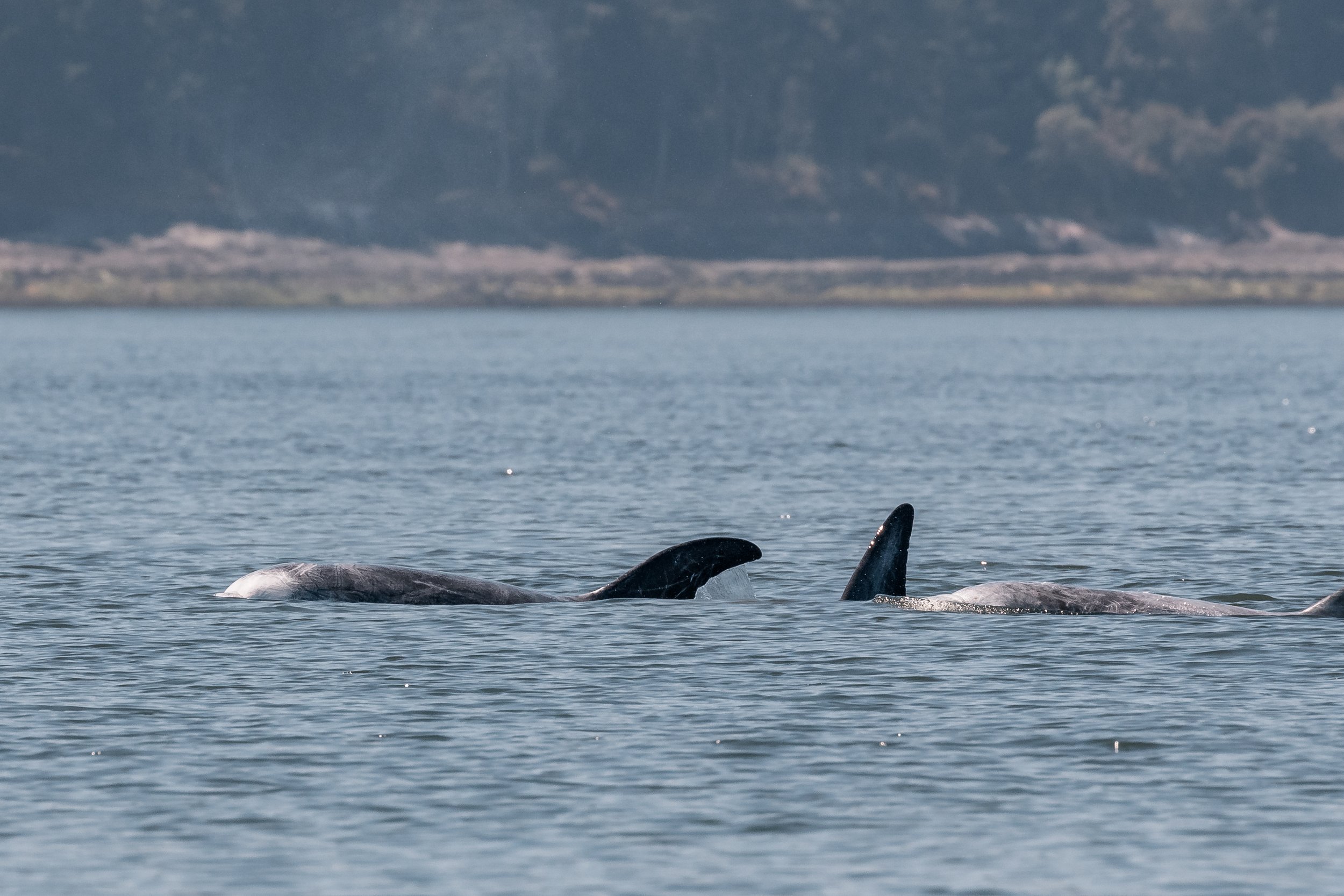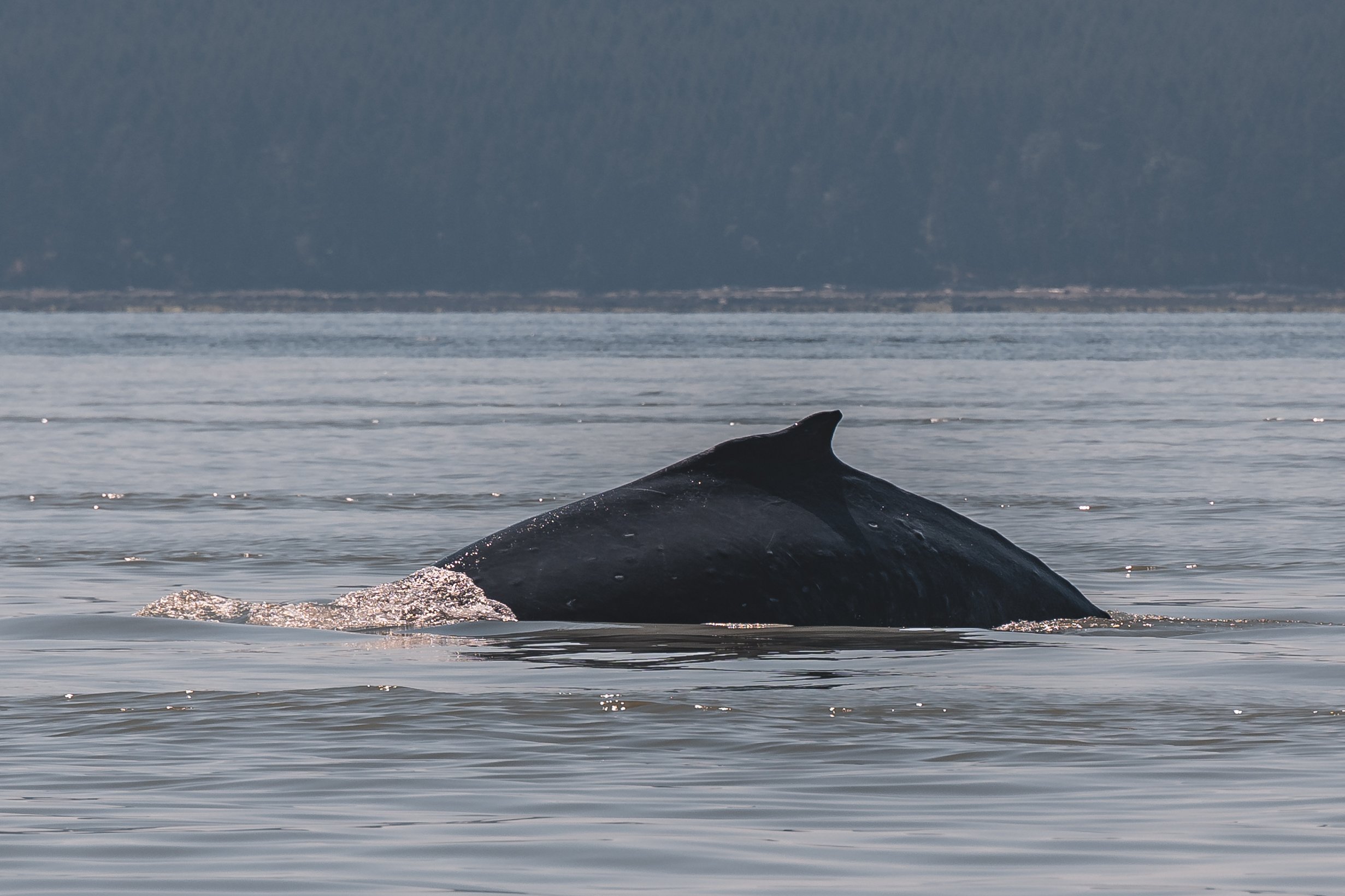July 29, 2022 - Orion and surprise Risso's dolphins
On July 29th we hung out with Orion again who was busy feeding out of Porlier Pass. In previous years Orion has frequented this area of the Salish Sea for a while, most years we find him feeding between Porlier Pass and the ferry route to Tsawwassen. Orion was doing some lunge feeding, one of the most common feeding methods used by our humpbacks. Lunge feeding works best when there are large bait balls of schooling fish and krill. Lunge feeding is done by diving deep beneath a bait ball and surfacing quickly, engulfing as much water and food as possible. Humpbacks are also known as rorqual whales, as they have large grooves that run along their ventral side. These grooves allow for their mouths to expand and hold massive amounts of water and food. As they approach the surface they begin to close their mouths and push the water out through their baleen plates. The baleen catches all the fish and krill which they swallow.
Over the last few days, we’ve seen Orion doing large circles outside of Porlier Pass and we are hoping he might be the first one to start our seasonal Porlier Pass humpback soup!
We got a very rare treat on the 29th as well. A pod of Risso’s dolphins swam through the Salish Sea. These small dolphins are often mistaken for orca with their point dorsal fins. Risso’s dolphins are fairly uncommon in our range and are typically found in deeper waters, diving over 1000 ft along continental shelves. These small whales only have 2 to 7 sets of teeth all on their lower jaw, for a maximum of 14 teeth. They use these teeth to grab their prey - typically squid - and then slurp them down! These little grey dolphins tend to be heavily scarred as well as the males often fight amongst each other and the scars don’t have any pigment so show up very white against the grey of the whale. They are also believed to travel in same-sex groups. These little whales are estimated to live about 35 years and are closely related Pilot whales, Pygmy killer whales, melon-headed whales, and False killer whales.
We had a great time watching our new visitors to the Salish Sea.
Enjoy the photos taken by marine naturalists Janine Van Der Linden, Vanessa Vereschahen, and Carmen Murphy.
Photo by Janine Van Der Linden, 10:30AM tour.
Photo by Janine Van Der Linden, 10:30AM tour.
Photo by Janine Van Der Linden, 10:30AM tour.
Photo by Janine Van Der Linden, 10:30AM tour.
Photo by Janine Van Der Linden, 10:30AM tour.
Orion (BCX1251). Photo by Janine Van Der Linden, 3:30PM tour.
Orion (BCX1251). Photo by Carmen Murphy, 10:30AM tour.
Orion (BCX1251). Photo by Carmen Murphy, 10:30AM tour.
Orion (BCX1251). Photo by Janine Van Der Linden, 10:30AM tour.
Orion (BCX1251). Photo by Janine Van Der Linden, 10:30AM tour.
Orion (BCX1251). Photo by Vanessa Vereschahen, 10:30AM tour.
Photo by Janine Van Der Linden, 3:30PM tour.
Photo by Janine Van Der Linden, 3:30PM tour.
Photo by Janine Van Der Linden, 3:30PM tour.
Photo by Janine Van Der Linden, 3:30PM tour.
Photo by Janine Van Der Linden, 3:30PM tour.
Photo by Janine Van Der Linden, 3:30PM tour.

















